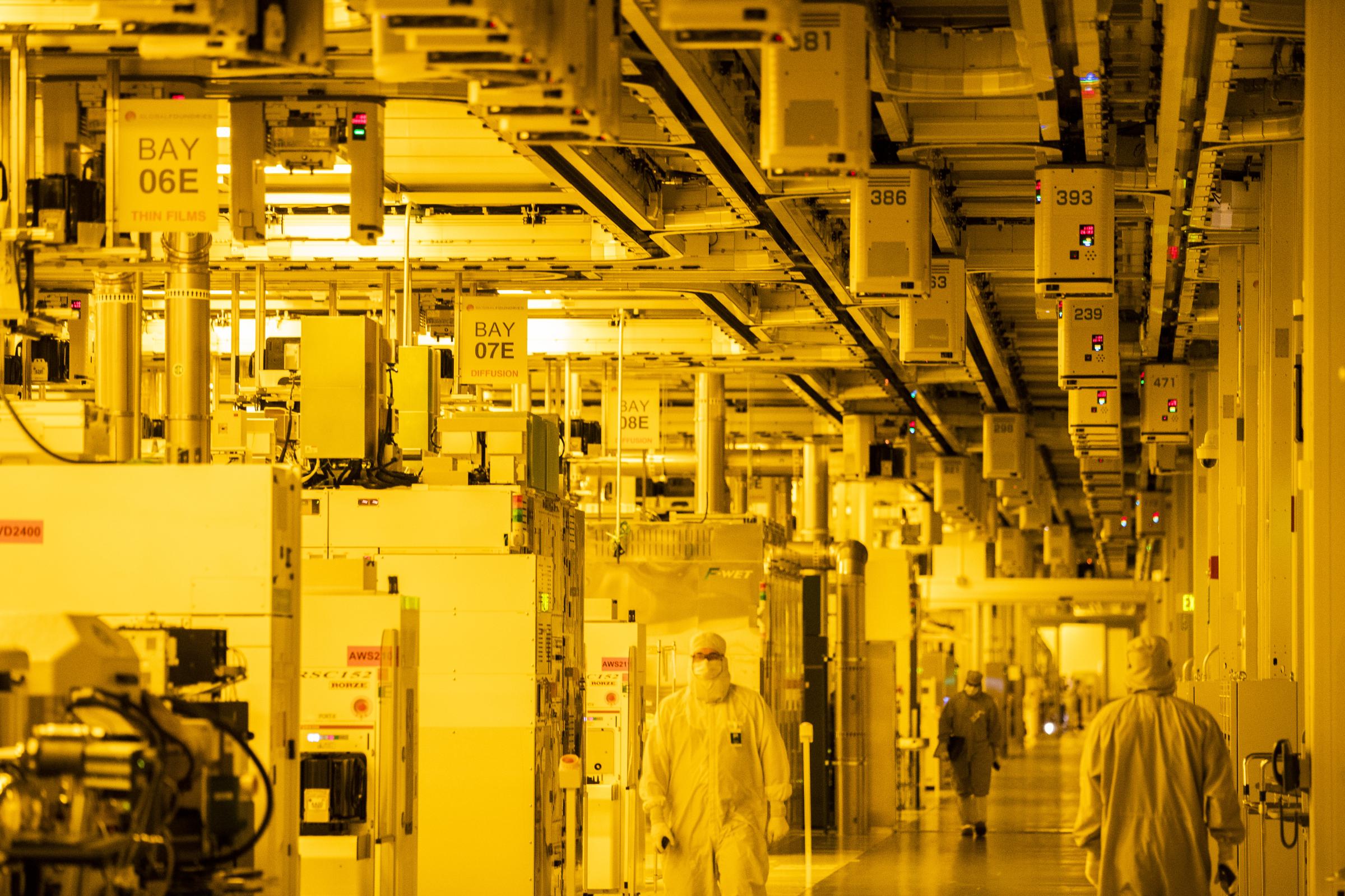
The Commerce Department on Tuesday took another step toward boosting chip manufacturing in the U.S., announcing that it will start dispersing $39 billion to companies that want to build semiconductor factories in the country as soon as spring 2023.
The funding, which President Joe Biden authorized in August, is part of one of the largest federal programs the government has ever administered to boost a single industry. The $52.7 billion CHIPS and Science Act aims to build up the domestic semiconductor industry and counter the national security implications of relying on chips made in China or Taiwan.
Semiconductors are a vital part of almost every technology in use today, from cars to video games to defense missiles. They used to be a relatively inexpensive component, one that cost as little as two cents to manufacture in the 1970s, but these tiny electronic switches are now part of the country’s supply chain woes and leading to higher prices for just about every device.
More than half of the total funding, about $28 billion, will go toward grants and loans to help build facilities that manufacture, assemble, and package the logic and memory chips that have been in short supply for over two years. Another $10 billion will go towards expanding manufacturing capacity for older generations of chips often used in cars and medical devices, while an additional $11 billion will go towards research and development spending.
Several semiconductor companies including GlobalFoundries, Micron, Qualcomm and Intel have already announced plans to make major investments in the U.S. that likely qualify for government funding.
Commerce Secretary Gina Raimondo said at a White House press briefing on Tuesday that the funding could be awarded to companies as early as next spring, particularly for smaller projects that only require funding to expand existing facilities, rather than to build new ones.
The Commerce Department also outlined the most important things that companies need to know, and how to apply. To receive the funding, companies will have to demonstrate that their factories will be economically viable over the long-term, and that they will bring jobs to the communities where they operate. The funds will also prioritize economically disadvantaged individuals, minority-owned businesses, veteran-owned businesses, women-owned businesses, and rural businesses.
Domestic and foreign companies can both apply for the funds, but Raimondo said on Tuesday that recipients will not be allowed to use that money for any new high-tech investments in other countries or build advanced technology facilities in China for a period of 10 years.
“This is not a blank check for companies,” Raimondo said. She added that the Commerce Department would use its authority to reclaim the money if recipients “fail to start their project on time, fail to complete their project on time, or fail to meet the commitments that they’ve made.”

The burst in federal spending as early as next spring is intended to spur growth in domestic chip production, but it may be a while until consumers see the effects when shopping for new electronics. Larger facilities can take up to five years to build, and many of the supplies and components needed to manufacture chips are also in short supply.
“I can’t answer how quickly, exactly, a specific chip is going to come,” Raimondo said.
The Commerce Department also released a report saying that the U.S. had lost its edge in producing the world’s most advanced semiconductors to China and Taiwan. Currently, most chip manufacturing takes place in Asia, where tax breaks make it more profitable for companies to operate. Some companies like Qualcomm, Nvidia and Apple have continued to design chips in the U.S. while doing the actual manufacturing in Asia.
“We are overly dependent on other countries for chips,” Raimondo told TIME in an interview in July. “It’s everything from silicon wafers, substrate, chemicals. This stuff is not made in the United States, and it’s shocking.”
But the Biden Administration hopes the funding blitz will incentivize semiconductor companies and their suppliers to move the manufacturing ecosystem to the U.S. sooner rather than later.
More Must-Reads from TIME
- Donald Trump Is TIME's 2024 Person of the Year
- Why We Chose Trump as Person of the Year
- Is Intermittent Fasting Good or Bad for You?
- The 100 Must-Read Books of 2024
- The 20 Best Christmas TV Episodes
- Column: If Optimism Feels Ridiculous Now, Try Hope
- The Future of Climate Action Is Trade Policy
- Merle Bombardieri Is Helping People Make the Baby Decision
Write to Nik Popli at nik.popli@time.com